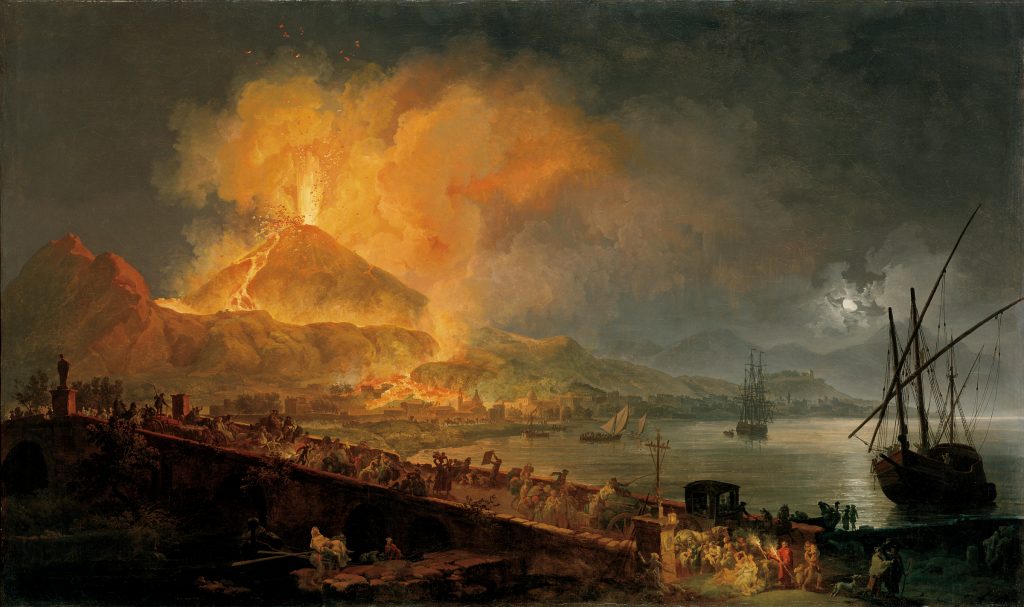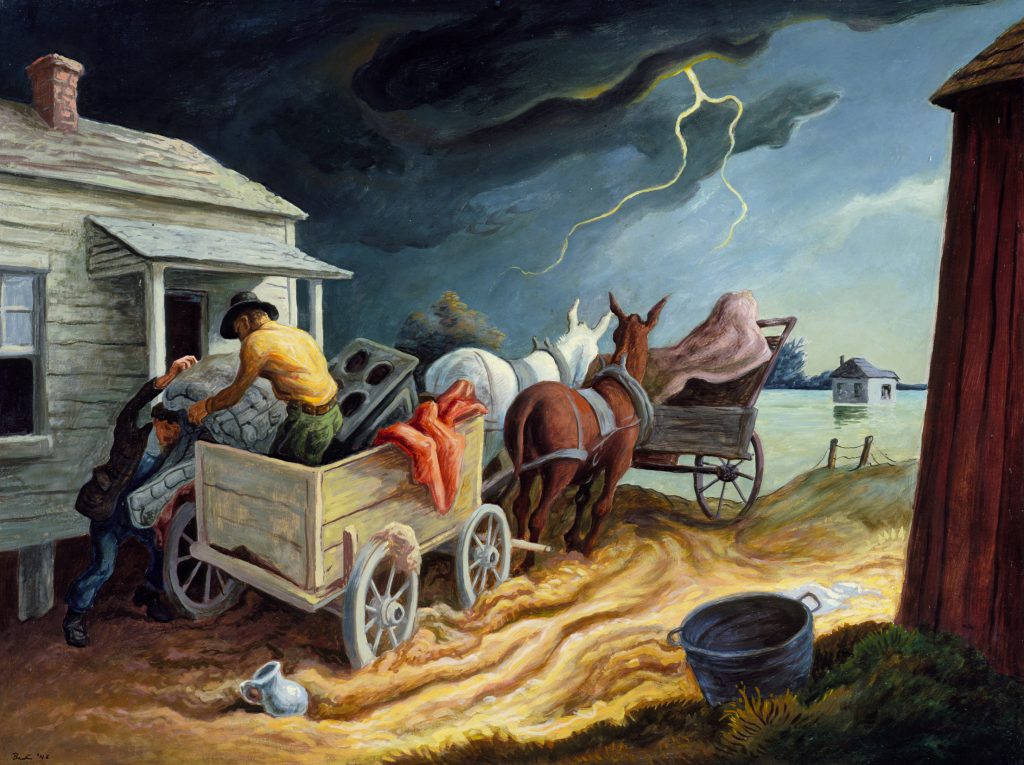1. Explore the term force as a class through discussion and example. (You may use a bowling pin and ball to demonstrate the impact of force on a still object. Use different types of balls if you wish to demonstrate different speeds and impact.) Describe the action of forces and the changes that action brings about. Ask students to help you brainstorm a list of forces that occur in nature (rain, wind, fire, etc.). Make a second list of the outcomes that often result from these forces (floods, power generation, movement of plants and seeds, etc.). Discuss ways students might measure these forces (wind speed, rain fall, temperature).
2. Discuss the focus works of art with students. Why are the people moving? What is making them flee the scene? How do natural forces impact (or change) the environment, humans, and other creatures? Ask students to look for examples of movement in the works. What did the artists use to show the movement caused by these natural forces? Ask students to describe the events that precede the moment depicted in each painting and what is about to happen in the scenes.
3. Handing out collage materials (torn paper, yarn scraps, etc.) and crayons/markers, have students create a multimedia artwork that helps them explore one natural force and the movement associated with it. How could they best show this natural force at work? What would it look like? (If necessary, have students research photographs of natural forces at work.) Would the student be in the picture? Would there be other people in the picture? Or, would there be some kind of object, such as a tree, car, ship, house? How would they respond to the force? What movement would be occurring?
4. Students will write and illustrate a descriptive paragraph about a superhero who possesses the powers of the natural force they selected in step 3. They will describe the way that superhero impacts the people and places around him/her.
Written by Sharon Hill, Art Educator

